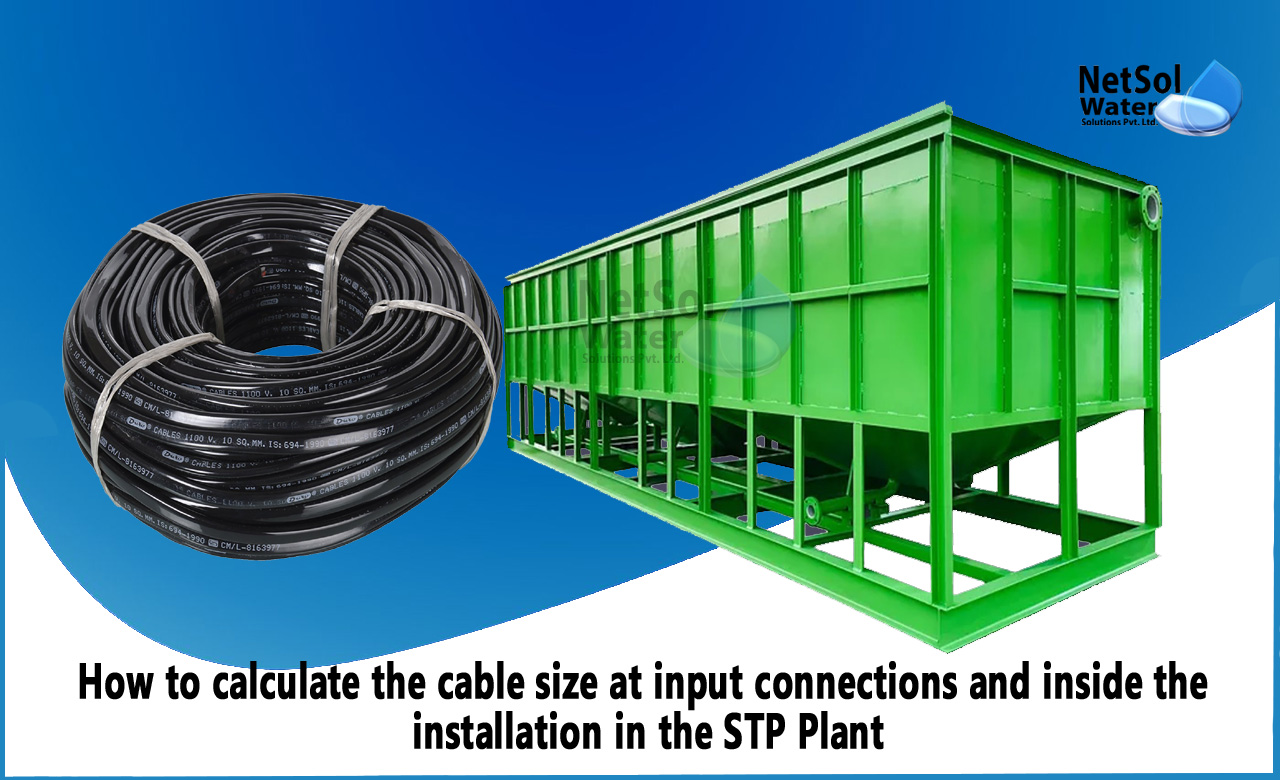How to calculate the cable size used in whole sewage treatment plant?
Sewage treatment plants play a vital role in managing and treating wastewater. They are responsible for cleaning and purifying sewage before releasing it back into the environment. A key component of sewage treatment plants is the electrical system that powers the equipment and machinery used in the treatment process. It's important to calculate the cable size at input connections for sewage treatment and inside the installation in the sewage treatment plant to ensure efficient and safe operation.
In this blog, we will discuss how to calculate the cable size and the factors that need to be considered.
Factors to Consider Before Cable Sizing Before calculating the cable size, it's important to consider the following factors:
- Load Current - The load current is the amount of electrical current required to power the equipment and machinery used in the sewage treatment process. It's important to determine the load current accurately to ensure that the cable can handle the current without overheating or causing other issues.
- Voltage Drop - The voltage drop is the decrease in voltage that occurs as the current flows through the cable. It's important to calculate the voltage drop and ensure that it's within the acceptable range for the equipment and machinery being used.
- Cable Length - The length of the cable is also an important factor to consider when determining the cable size. A longer cable will have a higher resistance, which can cause a voltage drop.
- Ambient Temperature - The ambient temperature is the temperature of the environment where the cable is installed. It's important to consider this factor because high temperatures can cause the cable to overheat.
Calculation of Cable Size for Input Connections To calculate the cable size for input connections, follow these steps:
- Determine the load current required to power the equipment and machinery.
- Determine the voltage of the power supply.
- Determine the voltage drop allowed for the equipment and machinery being used. A voltage drop of 5% is usually allowed.
- Determine the cable length.
- Determine the ambient temperature of the installation area.
- Using the following formula, calculate the cable size: Cable Size (mm2) = (Load Current x Cable Length x √3) / (Voltage x Power Factor x Voltage Drop Factor)
Where:
- Load Current is in amps.
- Cable Length is in meters.
- Voltage is in volts.
- Power Factor is the power factor of the equipment and machinery being used.
- Voltage Drop Factor is the voltage drop factor based on the material of the cable. For copper cables, it's 18. For aluminum cables, it's 30.
Calculation of Cable Size Inside the Installation To calculate the cable size inside the installation, follow these steps:
- Determine the load current required to power the equipment and machinery.
- Determine the voltage of the power supply.
- Determine the voltage drop allowed for the equipment and machinery being used. A voltage drop of 5% is usually allowed.
- Determine the cable length.
- Determine the ambient temperature of the installation area.
- Determine the grouping factor of the cables. The grouping factor is the number of cables that are installed together in the same conduit or trunking. The grouping factor varies depending on the number of cables being used.
- Using the following formula, calculate the cable size: Cable Size (mm2) = (Load Current x Cable Length x √Grouping Factor) / (Voltage x Power Factor x Voltage Drop Factor)
Where:
- Load Current is in amps.
- Cable Length is in meters.
- Voltage is in volts.
- Power Factor is the power factor of the equipment and machinery being used.
- Voltage Drop Factor is the voltage drop factor based on the material of the cable. For copper cables, it's 18. For aluminum cables, it's 30.
Conclusion:
Calculating the cable size for input connections and inside the installation of a sewage treatment plant is crucial to ensure safe and efficient operation. It's important to consider factors such as load current, voltage drop, cable length, ambient temperature, and grouping factor to determine the appropriate cable size.
Once you have calculated the cable size, it's important to choose a cable that meets the required specifications, including the material, insulation, and sheathing. It's also important to ensure that the cable is installed properly and in accordance with local electrical codes and regulations.
Proper cable sizing and installation can help prevent electrical hazards, equipment damage, and downtime, ensuring that the sewage treatment plant operates smoothly and efficiently. Regular maintenance and inspection of the electrical system can also help identify and address potential issues before they become major problems.
In conclusion, cable sizing is an important aspect of designing and installing electrical systems for sewage treatment plants. By following the steps outlined above and considering the factors discussed, you can ensure that the cable size is appropriate for the equipment and machinery being used, and that the system operates safely and efficiently.
Get in touch with us by placing a call at +91-9650608473 or email at enquiry@netsolwater.com



